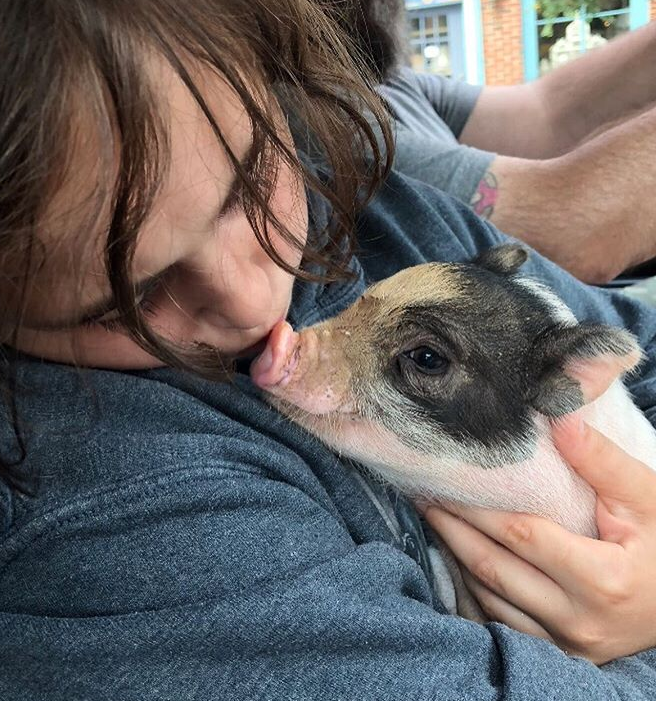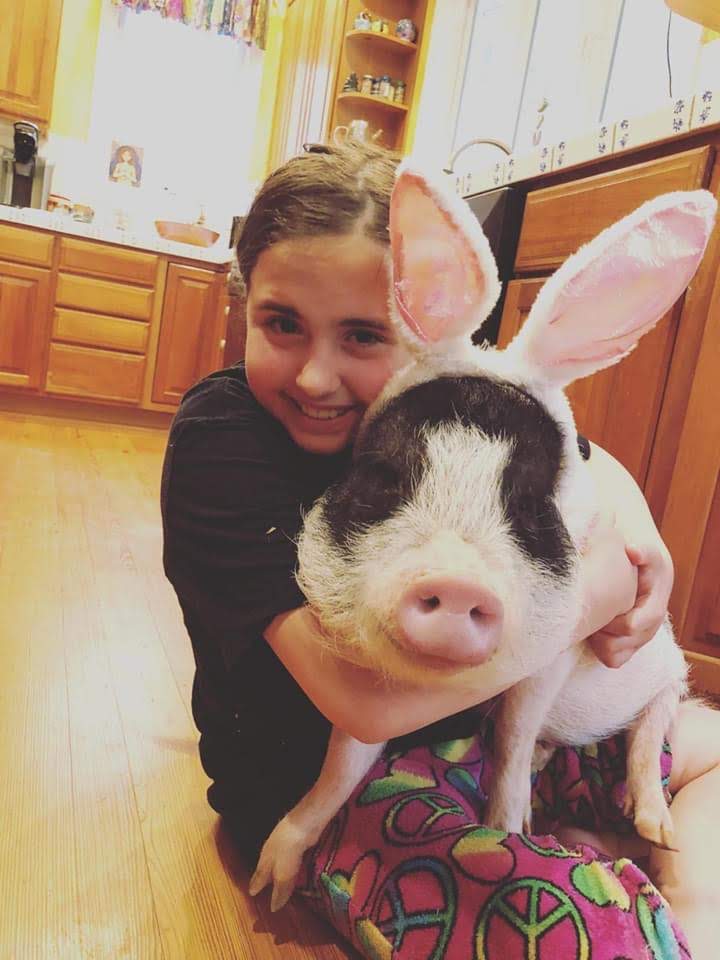The “microsanctuary movement” has been gaining popularity and traction in the animal-rights community. A microsanctuary is the concept of using your space, however much you may have, to provide a safe haven for non-human animals. The main appeal of microsanctuaries is that everyone can contribute, and many have the resources to start one. Even if you don’t have the opportunity to foster or home animals, you can help with rescues, transport, supplies, and more.
Microsanctuary networks have significant importance. They essentially operate as an underground railroad for liberated animals. Because this is the movement of non-human animals, it is vital that we connect our work with the victims and listen to their voices/desires. If the end goal of the animal-rights movement is animal liberation, we need a network of homes for the abundance of liberated animals. Supporting sanctuary work in any way you can is a crucial form of activism.
How can you get involved with micro sanctuary work?
1. If you have the resources, you can begin your own microsanctuary. Make sure your property is zoned to have “farmed” animals, and that you have the space for them. Also ensure you have a steady form of income to provide for non-human animals. The main tip is to DO YOUR RESEARCH! It is irresponsible to begin caretaking without extensive knowledge. Some great resources are farmsanctuary.org (they have care sheets for pretty much every species of animal rescued from the food system), minipiginfo.com, and microsanctuary.org. With the internet at our disposal it is so easy to begin researching. Start small: many animals needing homes can be found on Facebook groups like Emergency Vegan Action Squad. On Craigslist people are often giving away chickens, ducks, and other animals. You can also ask your local animal sanctuary if they have any rescues coming up and if they need fosters/permanent homes.
2. Offer to help with transporting animals to microsanctuaries. Facebook groups like Emergency Vegan Action Squad always have opportunities for transport. Many of these situations are incredibly urgent. If you want to begin transport, you should have a basic knowledge of the animal species you are transporting. Make sure to have medical supplies, clean up supplies, food, and water on hand.
3. Donations are critical for micro sanctuaries to continue their work. If you have the resources, there are many different sanctuaries in need of support. You can also donate supplies such as: blankets, towels, bottles for baby animals, milk replacer, medical supplies, cleaning supplies, feed, hay, straw, etc. Even if you don’t have the resources to donate, you can promote microsanctuaries and encourage others to support them. Share and like their posts, set up a Facebook fundraiser, sell baked goods to raise money, etc.
The story of our microsanctuary
In the summer between my 6th and 7th grade year, I rescued my daughter, a little piggy named Franny from the side of a road. Found in a rusty cage with an empty water dish and a sign that said, “FREE BACON,” Franny was emaciated, infected with parasites, and scared. She quickly bonded to me and wanted to be held 24/7. We sleep together, work together, watch shows together, go on trips together, etc. She and I cannot stand to be apart, and letting her into my life and heart has been the best decision I have ever made.
It has been so rewarding seeing her get stronger and grow trust, and seeing people around me connect her, an individual, with the bacon on their plate. In October 2019 I took her to George Mason University to hold a booth allowing students to meet Franny and hear her story. Many were so deeply affected that they began to cry, some of them had to step away and contain their emotion. In that moment they had the first connection in their lives with a pig, a pig who could’ve been on their plate.
Being a pig mom makes everyday interesting. It has also been exciting to see Franny interact with other animals that I take in. When we took in Juniper, a cornish rooster rescued by a teenage girl in NYC, Franny was initially scared. In fact you could say she was terrified of him. But soon she got closer with him, and they were so curious about each other. Unfortunately Juniper passed away of a heart attack in November, due to the manipulation of his body caused by animal agriculture, but everyday he is one of the reasons why I continue to provide sanctuary for liberated beings.
While many vegans are aware of the good that they do, it’s easy to forget about making a difference to an individual animal—a difference between life and death, happiness and despair. With the immediate impact on individuals and the ripple effect across the community, microsanctuaries are an incredibly effective, important, and rewarding form of activism. Everyone can get involved in one way or another, making it very accessible. Below are some of the resources mentioned to get started.
Farm Sanctuary: Has care sheets for every possible animal rescued from the food system and is one of the most reliable sources.
Microsanctuary Resource Center: Offers grants and information for aspiring micro sanctuary owners.
Mini Pig Info: A large database of information that applies to most pigs (mini or not), including info on how to raise orphaned piglets, trim hooves, etc. For anyone who has rescued pigs this is a go to place.
Emergency Vegan Action Squad: A group that has a plethora of rescue opportunities or transport volunteer opportunities. It is also a good place to help find rescue for animals that you cannot personally rescue.
Get more like this—Sign up for our daily inspirational newsletter for exclusive content!
__
Photo: Josephine DeBellis





